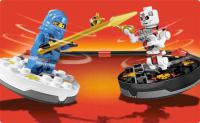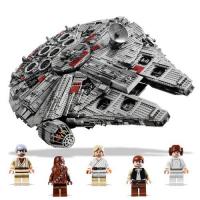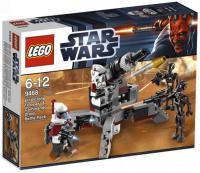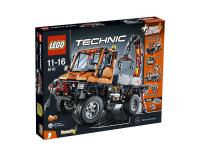

There are some very interesting similarities pointed out by the article between the LEGO and Barbie Doll collectible's market. The first one is the age of the two companies. The LEGO brick, as we know it currently, was launched in 1958, while the first Barbie Doll was produced in 1959. Another similarity of both markets is the importance of the box that the toys were sold in from the factory. In both cases, LEGO and Barbie Doll collectors and investors value the items that are still new and sealed in the original packaging. Known as Never Removed From Box (NRFB) in the world of Barbie Doll collecting and Mint In Sealed Box(MISB) in the LEGO world of investing, these two terms are one in the same. Regardless of whatever you would like to call them, it is the desired condition of the toy when one is collecting them for the purpose of investment. As with LEGO sets that have been opened, built and displayed and are called “used,” Barbie Doll has a similar classification called “de-boxed,” in which the Barbie Doll is removed from the packaging and displayed. By opening and displaying both LEGO sets and Barbie Dolls, the value of the collectible item decreases substantially.
As any LEGO collector or investor can see, the values of some Barbie Dolls far exceed even the most expensive LEGO set. The 10179 UCS Millennium Falcon has sold for over $4000 on several occasions, yet that pales in comparison to vintage Barbie Dolls selling for $27,000 or more. Now, there have been large LEGO MOCs(My Own Creation) that sold for more than $30,000 on EBAY, but the conventional store sold LEGO sets have maxed out under $5000. That being said, both markets are still remarkably similar. Most Barbie Dolls on EBAY sell for less than $100, very similar to LEGO sets. In fact, both LEGO and Barbie Dolls have similar sales numbers on EBAY in relation to total auctions on a daily basis...around 200,000 listings at any given time. They are both iconic toys and have been around over 50 years and have shown excellent growth in the toy industry and interest from child and adult fans alike.
So what's the point of this whole article and how does it really relate to LEGO collecting and investing? Well, for one thing, I wanted to point out that there were toy collectible items that were closely related to LEGO sets and bricks that weren't Baseball Cards and haven't suffered from a “speculative bubble” that burst. The Barbie Doll collectible's market is alive and strong and items can sell for top dollar, in the tens of thousands of dollars on occasion. The Barbie Doll collectible's market, like the LEGO market, deals with new and used items and box condition is of paramount importance to the value of the items being sold and there are hundreds of thousands of EBAY listings on any given day of Barbie Doll and LEGO items. These two markets have run a parallel course over the past 50 years to become two of the most known and most popular toy lines ever created. In my research for this article, I did not find any reputable or coherent mention of a Barbie Doll investment bubble and that is quite amazing considering the selling price of some of the more expensive, rare and vintage Barbie Dolls can be tens of thousands of dollars. As a strong believer in the LEGO brand and LEGO investment, I would like to think that success in a similar toy collectible's market like Barbie Dolls will translate into continued growth and success of the LEGO product line in both the primary and secondary LEGO markets and that it is possible for continued positive growth without the “speculative bubble” hanging over every LEGO investor's head.
On a final note, I would like to point out that there is a definite influence of Barbie Dolls in the new Friends LEGO theme. For years, the LEGO brick was considered a toy that was geared towards young boys and men, but the Friends theme was developed to draw interest from young girls and women, with Barbie-like minifigures, pastel-colored LEGO bricks and sets that reminds Barbie fans of old Barbie Doll Dreamhouses and convertible Barbie cars. This Barbie Doll influence on LEGO sets has been a profit windfall for The LEGO Group, with sales of the Friends theme far “exceeding” expectations and have sold twice as many Friends sets than expected(LEGO PRESS RELEASE) over the first half of 2012. This success looks to continue, with the Friends sets being sold at full MSRP and getting hard to find in various toy departments.
All in all, I found the article about Barbie Doll investing to be quite enlightening and very relative to the current LEGO investing and collecting market. The Barbie Doll and LEGO collectible's markets are similar in many ways and have been driving forces in the toy industry for over 50 years. I see both markets continuing on a positive growth path and while there are no guarantees in the investment world, investing in the correct Barbie Doll or LEGO set can be a very profitable endeavor...
LEGO PRESS RELEASE: http://aboutus.lego.com/en-us/news-room/2012/august/half-year-result_2012/
- Read more...
-
- 16 comments
- 3,828 views













